4 Way Stretch Knee Support
Login For Health Care Pricing
In Stock
The LP 4 Way Stretch Knee Support provides firm support of the knee joint with gentle compression over the kneecap and is designed to conform naturally to the contours of the knee.

Knee pain is a common problem in modern society and affects people of all ages and walks of life. Pain is the most common knee symptom and it is often felt in the anterior, medial and lateral aspects of the joint. Pain in the posterior knee is less common. In light of the many uses to which we put our knees, plus the fact that it is responsible for bearing weight, this is perhaps not too surprising.
Unfortunately, because the knee plays such an important role in many everyday activities, pain from it can be a significant detractor to quality of life. It is also true that knee pain can have many underlying causes, ranging from injuries like a torn ligament to medical conditions like arthritis. As a general rule, pain caused by degenerative or inflammatory conditions tends to be diffuse in nature, while in mechanical disorders the pain is usually more localised.
The good news is that many (but not all) common causes of knee pain are treatable with simple home based measures.
Even more causes of knee pain can be treated using a knee brace plus some physical therapy. The remaining cases usually require a more invasive treatment, up to and including surgery.
We briefly discuss below the approach a doctor may take to diagnosing the cause of the knee pain being experienced by a patient. We then list the most common causes of knee pain and outline the most common remedies.
We must emphasize that the potential causes of knee pain include a number of serious medical conditions. As a result, the final judgment as to the cause of your pain and its remedy should be made by your health care advisor.
To reach a diagnosis of the cause of knee pain, a doctor may start by thoroughly reviewing the patient’s medical history. Of interest will be any previous knee injuries the patient may have suffered.
The doctor will likely then conduct a thorough physical examination of the painful knee. The patient may be asked when the pain started and what he or she was doing at the time. He may also be asked to explain what (if anything) makes the pain worse.
The doctor may palpate (examine by touch) the knee in order to understand the precise location of the pain and to detect any swelling or inflammation that may also be present.
In addition to the above procedure, the doctor may request an imaging study of the knee. This may take the form of an X Ray, CT scan or MRI scan.
These are injuries caused by torn or overstretched knee ligaments. Probably the most common knee injury of this type is a torn anterior cruciate ligament (ACL). However, other knee ligaments – namely the MCL, PCL and LCL – can also be damaged. Of these three, injury to the medial collateral ligament (MCL) is most common. Along with the knee pain, the individual with damaged knee ligaments (or a knee sprain) may experience knee instability and pain and swelling of the knee.
This type of injury mainly affects athletes, particularly those in sports involving running, jumping and directional changes on the run. A MCL injury can happen with valgus displacement and external rotation of the knee. Repeated playing of sports like basketball, football, tennis and other similar pursuits places stress on the knee. These sports therefore increase the risk of experiencing knee pain from a damaged ligament at some point in the future.
This is another injury that mainly affects athletes in sports requiring plenty of running or jumping. The menisci in each knee are tough rubbery pieces of cartilage that act as shock absorbers. They cushion the impact between the thigh bone and shin bone while walking or running. The risk factors for this type of injury are similar to those mentioned above for knee ligament sprains. The medial meniscus is more commonly injured than the lateral one.
A torn cartilage or meniscus can signal itself by knee pain as well as a grinding sound or sensation when the knee is flexed or extended. It is often associated with an injury to the anterior cruciate ligament.
Knee bursitis develops when the fluid filled sacs in the knee joint (the bursae) become inflamed and irritated. Healthy bursae are responsible for allowing ligaments and tendons to glide frictionlessly over the bones in the joint.
The patella tendon connects the kneecap (patella) to the shin bone below it. Among physically active individuals,repeated running and jumping can lead to overuse of this tendon. It then becomes irritated and inflamed, causing patellar tendonitis and knee pain. Usually, the part of the tendon below the kneecap is affected. Typically, it causes anterior knee pain which gets worse when walking down stairs or running.
Unless the ligaments or tendons are completely torn, this cause of knee pain due to the above causes can be treated conservatively by resting the knee. Generally speaking, the PRICE approach can be used (protection, rest, ice, compression and elevation). A hinged knee brace will also protect the ligaments or cartilage from additional damage. A knee strap can help ease the pain of patellar tendonitis.
Icing, compressing and elevating the knee are the other typical components of the treatment for a knee ligament sprain or torn meniscus.
There are three main bone structures of the knee – the thigh bone, kneecap and shin bone. Any of them can be broken as the result of a fall or accident. Signs present include a painful, swollen knee and a gap between the bone fragments involved in the fracture. Depending on which of the three bones are fractured, extension of the knee may not be possible.
Individuals with brittle bones may be suffering from osteoporosis, a condition that makes bone fractures more likely from even minor accidents.
Knee pain from a fracture will not go away with conservative treatments. The most likely treatment (remedy) will involve some type of surgery to repair the damaged bone(s).
A dislocated (or subluxated) kneecap is one that has slipped out of the narrow trochlear groove in which it is supposed to move in a healthy knee. It usually happens only as a result of an injury involving considerable force, like a road accident. Sometimes, it is associated with injury to the cruciate as well as one or both of the collateral ligaments.The resulting knee pain may be accompanied by stiffness, swelling, bruising, deformity and a popping or cracking sound when the patient tries to move the knee.
This injury can be treated in some cases by immobilizing the knee for a period, at the end of which the knee will have recovered. A patella stabilizer knee brace and crutches may be recommended during this period.
Closed or open reduction of the dislocation under general anaesthesia is often necessary. However, if there has been bone damage as a result of the dislocation (e.g. a piece of bone has broken off the patella), surgery may be required to correct the damage.
Another cause of knee pain can arise when pieces of bone or cartilage become loose in the knee as a result of a knee injury or other problem. These small pieces can interfere with knee movement and cause pain and reduced range of motion. Locking is the term used when the knee gets stuck in one position, making it impossible to completely bend or straighten the leg. In most cases, they will need to be removed via surgery.
There are many types of arthritis that can affect the knee, but the two main ones are osteoarthritis and rheumatoid arthritis. Each of the forms of knee arthritis results in knee pain and stiffness.
Knee osteoarthritis is a wear and tear condition that causes loss of the cartilage that covers a healthy knee bone. It can be primary or secondary. Primary osteoarthritis is present when there is no underlying predisposing condition. Secondary arthritis develops as a result of a different condition or injury like a meniscus injury, recurrent patella dislocation or a joint infection,This results in direct contact between the bones of the knee (thigh bone, knee cap and shin bone), causing knee pain and stiffness. Initially, doctors can help to manage the progression of this condition using unloader knee braces, pain control medication and lifestyle changes such as weight loss. However, long term sufferers of knee osteoarthritis are eventually faced with the need for knee replacement or other surgical treatments.
Rheumatoid arthritis of the knee occurs as a result of the body’s immune system attacking and eventually destroying the knee joint lining. Since this lining is supposed to help lubricate a healthy knee, its destruction causes knee pain and stiffness. To manage this condition, doctors can prescribe immunosuppressant medication. Symptomatic treatment of joint pain with medications like non-steroidal anti-inflammatory drugs (for example ibuprofen and naproxen) and paracetamol also play a role.
Knee pain can also be caused by several other possible conditions. These include patellofemoral pain syndrome, iliotibial band syndrome and an irregular gait.

Login For Health Care Pricing
In Stock
The LP 4 Way Stretch Knee Support provides firm support of the knee joint with gentle compression over the kneecap and is designed to conform naturally to the contours of the knee.

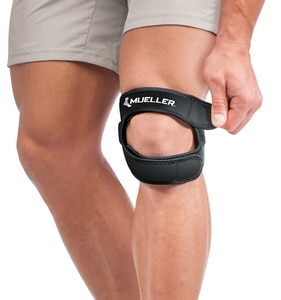
Login For Health Care Pricing
In Stock
The Mueller Max Knee Strap is a versatile knee strap designed to apply targeted compression at painful knee areas to relieve discomfort.
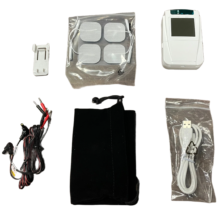
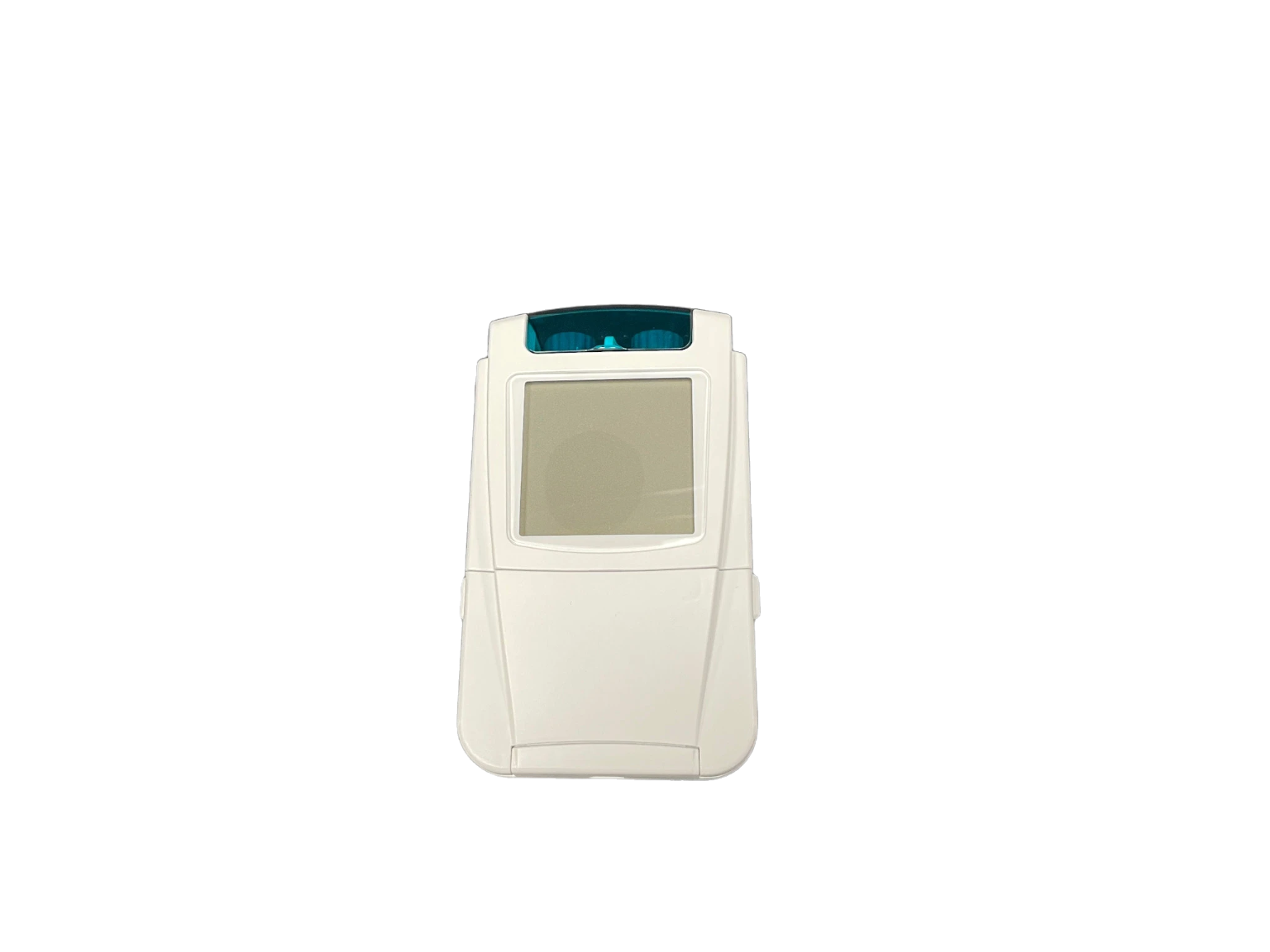
Login For Health Care Pricing
In Stock
The ProActive Alevia 2 in 1 combines TENS and EMS and offers 18 pre-set programs or fully customizable treatment options with a large, easy-to-read LCD screen.

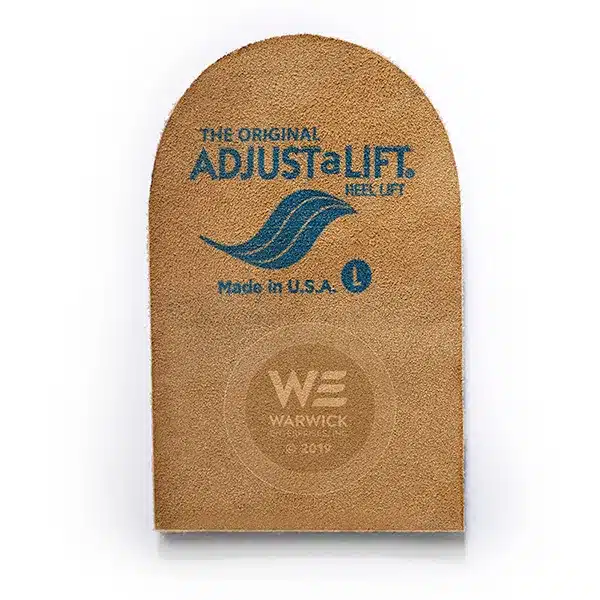
Login For Health Care Pricing
Typically Ships in 3-5 Business Days
The Adjust A Lift Heel Lift features 3 1/8″ layers of non slip material that can be removed as needed to get the exact amount of heel base lift required. Latex free and an excellent solution to issues like leg length inequality or heel spurs.
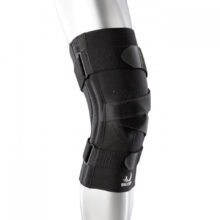

Login For Health Care Pricing
In Stock
Patella subluxation and patellofemoral pain treatment
The Bio Skin Premium J combines function, comfort and affordability. Constructed from Bio Skin`s breathable materials, the Premium J gives excellent compression without causing discomfort. A buttress on the outside of the patella prevents patella subluxation and knee dislocation. The two elastic straps that cross over the knee help seat the patella in the trochlear groove to increase surface contact area and decrease patellofemoral pain.

Login For Health Care Pricing
In Stock
Patella subluxation and patellofemoral pain treatment
The Bio Skin Premium J with Conforma Hinge combines function, comfort, and affordability. Constructed from Bio Skin’s breathable materials, the Premium J gives excellent compression without causing discomfort. A buttress on the outside of the patella prevents patella subluxation and knee dislocation. The two elastic straps that cross over the knee help seat the patella in the trochlear groove to increase surface contact area and decrease patellofemoral painPremium J with Conforma Hinge – Protection against patellar subluxation
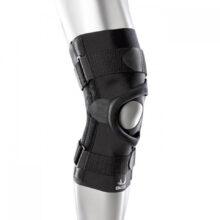
Login For Health Care Pricing
In Stock
Q Brace – Adjustable support for patellofemoral pain
The Bio Skin Q Brace is designed to reduce the pain of mild to moderate patellofemoral problems. The Q Brace`s T Strap places gentle, lateral pressure on the patella to prevent subluxation (dislocation) and to help maintain the patella in its proper position. Constructed from Bio Skin`s breathable materials, the Q Brace gives excellent compression without causing discomfort.

Login For Health Care Pricing
In Stock
Multi-directional patella tracking knee brace
The Bio Skin Q Brace Front Closure is designed to reduce the pain of mild to moderate patellofemoral problems. The Q Brace’s t-strap places gentle, lateral pressure on the patella to prevent subluxation (dislocation) and to help maintain the patella in its proper position. Constructed from Bio Skin’s breathable materials, the Q Brace gives excellent compression without causing discomfort.

Login For Health Care Pricing
Typically Ships in 1-2 weeks
Adjustable support for patellofemoral pain
The Bio Skin Q Brace with Conforma Hinge is designed to reduce the pain of mild to moderate patellofemoral problems. The Q Brace’s t-strap places gentle, lateral pressure on the patella to prevent subluxation (dislocation) and to help maintain the patella in its proper position. Constructed from Bio Skin’s breathable materials, the Q Brace with Conforma Hinge gives excellent compression without causing discomfort.

Login For Health Care Pricing
Typically Ships in 1-2 weeks
Adjustable support for patellofemoral pain
The Bio Skin Q Brace with Conforma Hinge – Front Closure is designed to reduce the pain of mild to moderate patellofemoral problems. The Q Brace’s t-strap places gentle, lateral pressure on the patella to prevent subluxation (dislocation) and to help maintain the patella in its proper position. Constructed from Bio Skin’s breathable materials, the Q Brace with Conforma Hinge gives excellent compression without causing discomfort.

Login For Health Care Pricing
In Stock
Maximum patellofemoral pain relief with SlimLok ROM hinge
The Bio Skin Q Lok ROM aids in the rehabilitation of patellofemoral joint while preventing subluxation and further dislocation during everyday activity. The high-level compression and dynamic patella traction strap make this brace ideal for patients suffering from a high Q angle, chronic pain from patella tilt, glide and malalignment. The thin, ½ inch range-of-motion hinge gives the option of limiting flexion and extension of the knee. Comfort is a key feature of this brace with a combination of Bio Skin’s breathable material and an enhanced single-layer lycra portion that is pre-tensioned to prevent chafing, irritation and bunching behind the knee. This Cirrus™ material also enhances the grip of the traction strap to ensure patellar control.